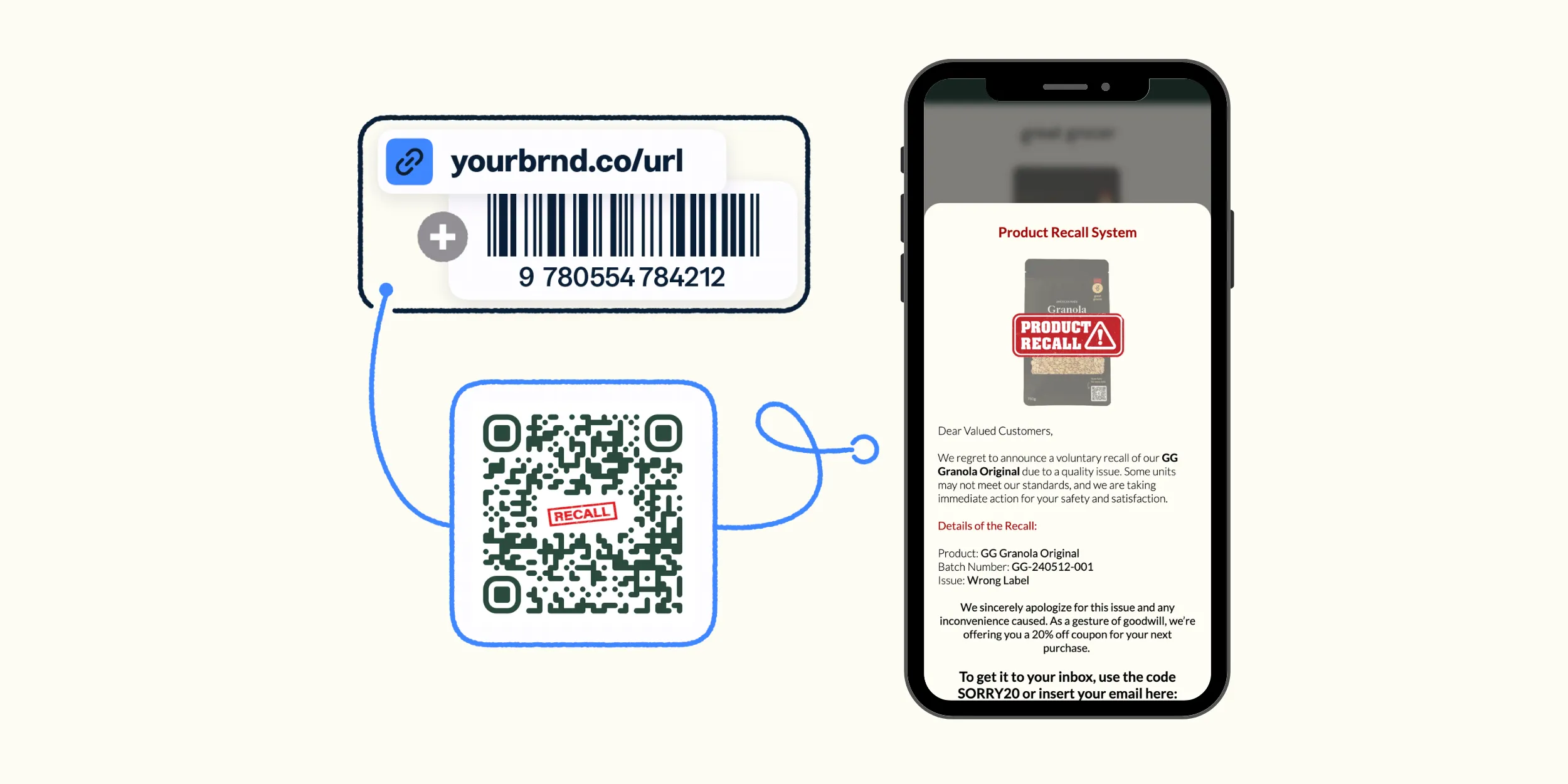Your Product's First Line of Defense

For years, the conversation around connected packaging has been dominated by its marketing potential. We've heard about QR codes that launch augmented reality experiences, NFC tags that deliver exclusive content, and the promise of turning a physical product into a direct-to-consumer digital channel. While these applications are undeniably powerful, focusing on them alone misses the bigger, more critical story: connected packaging is one of the most effective risk management tools a brand can deploy.
In a world of increasingly complex global supply chains, geopolitical instability, and sophisticated bad actors, your products are constantly exposed to threats that can erode revenue, damage your brand's reputation, and even endanger consumers. By embedding a unique, secure digital identity onto every single item, you transform your packaging from a passive container into an active, intelligent first line of defense. Let's explore how.
Threat 1: The Scourge of Counterfeiting
Counterfeit goods are no longer just about cheap knock-offs sold in back alleys. They are a multi-trillion-dollar illicit industry, with fakes that are often indistinguishable from genuine articles infiltrating legitimate e-commerce sites and retail shelves. This poses a direct threat to your revenue and, more importantly, to the trust you've built with your customers.
The Connected Solution:
By giving every product a unique, serialized identity via a secure QR code or NFC tag, you empower everyone in the supply chain- from distributors to end consumers, to act as a brand inspector. A simple scan can instantly verify authenticity against a secure database. Advanced platforms can even detect "cloning" - a scenario where a single unique ID is scanned in multiple geographic locations at once, instantly flagging a counterfeit operation. This moves you from a reactive game of whack-a-mole to a proactive defense that safeguards both your bottom line and your brand equity.
Threat 2: Grey Market Diversion and Channel Chaos
Grey market diversion occurs when your genuine products are sold outside of authorized distribution channels. For example, a product intended for a market with lower pricing might be illicitly rerouted and sold in a premium market, undercutting your official retail partners and throwing your entire pricing strategy into chaos. This damages vital partner relationships and erodes brand value.
The Connected Solution:
A unique digital identity allows for "geo-fencing" your products. The identity is tied to its intended journey and destination. If a product destined for South America is scanned upon arrival at a distribution center in Europe, an alert is automatically triggered at headquarters. This real-time intelligence gives brands unprecedented control over their product flow, enabling them to identify and shut down leaks in their distribution network before they cause significant damage to their channel strategy.
Threat 3: The Catastrophic Cost of Recalls
A product recall is one of a brand's worst nightmares. The traditional approach is often a blunt instrument: an entire batch, or even multiple batches, must be pulled from shelves, costing millions in lost product, logistics, and reputational damage. In many cases, a vast number of perfectly safe products are destroyed simply because it's impossible to identify the specific items that are affected.
The Connected Solution:
Connected packaging enables "surgical recalls." Because each item has a unique digital identity linked to granular production data (such as the specific production line, time of manufacture, and shipping container), you can pinpoint the exact scope of a problem with incredible precision. Instead of recalling tens of thousands of units, you can issue a recall for the 150 specific items that are affected. This not only drastically reduces the financial impact but also demonstrates a high level of control and responsibility to consumers and regulators, minimizing damage to brand trust.
Threat 4: Inventory Blind Spots and Inefficiency
"Where are my products right now?" It's a simple question that, for many businesses, is incredibly difficult to answer. This lack of visibility leads to costly inefficiencies, from stockouts that result in lost sales to overstocking that ties up capital and leads to spoilage, particularly for consumer packaged goods and perishable items.
The Connected Solution:
Every scan of a product's unique ID - as it leaves the factory, enters a warehouse, or is checked into retail inventory - creates a digital breadcrumb trail. This provides a real-time, item-level view of your inventory across the entire supply chain. This data allows for smarter forecasting, optimized logistics, and the prevention of costly stock-related issues. Furthermore, this end-to-end traceability is exactly what is required to comply with emerging regulations like the FSMA Rule 204.
A Strategic Shift: From Cost Center to Asset
Viewing connected packaging solely through a marketing lens is a strategic mistake. It's time to reframe our thinking. The same QR code that delivers a promotional video to a consumer can also carry the encrypted, secure data that protects your brand from counterfeiters, streamlines a recall, and provides item-level inventory intelligence.
By treating your packaging as an active, data-generating asset, you build a more resilient, efficient, and trustworthy business. The brands that understand this dual power of connected technology will not only survive the challenges of the modern marketplace- they will thrive in it.
Sources:
- Counterfeiting: The Hidden Threat to Global Commerce. (2024, July 11). Saint Louis University School of Law.
- Corsearch. (2024, May 15). Trade in counterfeit goods market set to reach $1.79 trillion in 2030.
- GS1 US. GS1 Digital Link for Brands.
- Brainority. GS1 Digital Link.
- AccessReal. (2024, January 12). Protecting Your Brand with GS1 Digital Link Compatible Patented Clone-Proof.
- Technologies International. (2022, August 8). The High Costs of Food and Beverage Recalls.
- Trace One. (2023, February 7). Food manufacturing and the true cost of product recalls.
- Number Analytics. (2025, June 12). The Power of Supply Chain Visibility.
- TechBullion. (2025, August 11). Supply-Chain Disruptions: Why End-to-End Visibility Matters More Than Ever.



